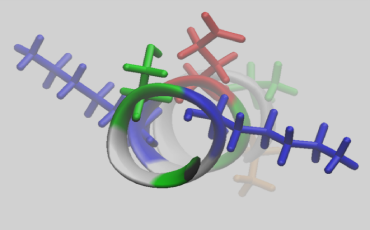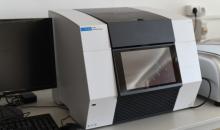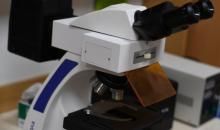Biochemistry

In the course presented here, we will discuss the molecular basis of biological system functioning and general biochemical processes that underlie the metabolism of carbohydrates, proteins, lipids and nucleic acids. A special attention will be devoted to coordination and regulation of metabolism of different biological compounds and involvement of vitamins.
Download of lectures and other teaching material
You need to be registered to the course and to login to the site to see the complete list lectures and teaching material available to download.
Please consider the copyright. You are allowed to share only teaching material visible to users that is accessible without authorization.
Course: 15 lectures, 6 seminars
Lectures: Halyna Semchyshyn, Galyna Ushakova, Oleh Lushchak
Seminars: Galyna Ushakova, Oleksandra Abrat
Thermodynamic bases of metabolism. The first and second laws of thermodynamics. Endergonic and exergonic reactions. Metabolic Pathways. Oxidation and reduction reactions. Redox potential. The Nernst equation. Biological oxidation. High energy phosphates.
Biochemistry of glycogen metabolism, its regulation and cyclic AMP. Glycolysis. Fates of pyruvate under anaerobic conditions.
General aspects. Chemistry and biological significance of oxidative decarboxylation of pyruvate and tricarboxylic acid cycle. Their regulation. Substrate-level phosphorylation. Energy balance of complete glucose oxidation.
Biological oxidation and mitochondrial electron transport chain. Chemi-osmotic theory. ATP synthase. Regulation of oxidative phosphorylation. General aspects and biological significance of non-mitochondrial electron transport chains in different species.
Gluconeogenesis. Interplay between glycolysis and gluconeogenesis. Fructose and galactose metabolism. Metabolism of alcohol.
General aspects, chemistry, and biological significance of hexose monophosphate pathway. Relationship between pentose phosphate pathway and glycolysis.
Coordinated regulation of glycogen breakdown/synthesis, glycolysis, gluconeogenesis, and pentose phosphate pathway.
General aspects, chemistry, and biological significance of lipid degradation. Catabolism of triacylglycerols. The role of hormones. Oxidation of fatty acids.
General aspects, chemistry, biological significance, and regulation of synthesis of fatty acids and triacylglycerols.
General aspects, chemistry, biological significance, and regulation of synthesis of cholesterol. Metabolism of ketones.
General aspects, biological significance, and regulation. Pathways of amino acid degradation. Ammonia transportation, detoxication, and excretion. Urea cycle.
The pathways of amino acid synthesis. General aspects, biological significance, and regulation.
Degradation of purines and pyrimidines. General aspects, chemistry, and biological significance.
Biosynthesis of purines and pyrimidines. General aspects, chemistry, biological significance, and regulation.
Coordination of carbohydrate, lipid, and protein metabolism. The role of vitamins.
General scheme of carbohydrate metabolism and regulation of the main metabolic pathways. Peculiarities of carbohydrate metabolism in the liver, brain, skeletal muscles and myocard.
Peculiarities of fat digestion and transportation. Chemistry of lipid degradation and biosynthesis. Metabolism of ketone bodies.
Neural and humoral regulation of energy metabolism. Mechanism of development of alimentary obesity. Situational tasks.
Pathways of transformations of α-amino acids and formation of physiologically active compounds in living organisms. Physicochemical properties of proteins and their dependence on amino acid composition. Disturbance of amino acid metabolism.
Role of amino acids in the synthesis of nucleotides. Key differences in the synthesis of purine and pyrimidine nucleotides. Ways of catabolism of nucleic acids and nucleotides. Mechanisms of genome stability.
Coordination of carbohydrate, lipid and protein metabolism. Principles of metabolism regulation in the cell: involvement of vitamins and hormones. Situational tasks.










